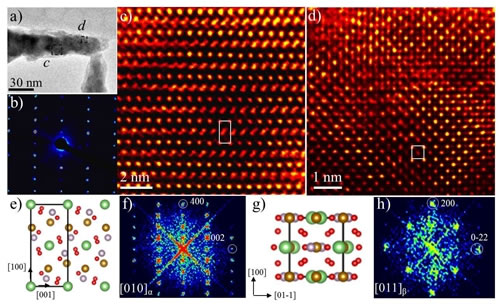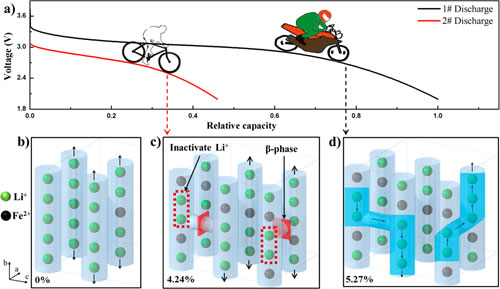Lithium-ion batteries have a wide range of applications as efficient energy storage systems in the transportation sector, including hybrid-electric vehicles (HEV), plug-in hybrid vehicles (PHEV) and electric vehicles (EV), but existing commercial lithium. Ion battery cathode materials can not meet people's needs for energy density, rate performance and stability. The safety and process complexity of LiNixCoyMnzO2 hindered the large-scale use; the spinel manganese LiMn2O4 faced a serious capacity fade problem; the LiFePO4 with good safety performance and low cost could not get rid of the restrictions of low working voltage and low energy density, in order to improve Working voltage and energy density, academics and industry are now paying more and more attention to LiMn1-xFexPO4 materials. Professor Feng Feng's research group at the School of New Materials of the Shenzhen Graduate School of Peking University recently made important progress in the research on the structure and properties of LiMn1-xFexPO4 materials. They succeeded in synthesizing two kinds of α-LiMn1-xFexPO4 nanomaterials (50-nanometer particles) with high iron and lithium reverse amounts, and the similar degree of anti-position shows a great difference in electrochemical performance. Through collaboration with Brookhaven National Laboratory, Germany’s Yulich National Laboratory, and Argonne National Laboratories, the research team conducted in-depth analysis of the structure of the two materials and discovered for the first time the use of high-precision spherical electron microscopes. The second phase of manganese lithium, β-LiMn1-xFexPO4, is embedded in the α-LiMn1-xFexPO4 50 nanoparticles with quantum dots (around 2 nm). It has been found that the material with good properties has a high iron-lithium reversal, resulting in a number of defect sites, because these defect sites open up the transmission in other adjacent directions, allowing lithium ion transport to propagate from one-dimensional lithium ion channel propagation to three-dimensional The channel transmission improves the charge and discharge performance of the lithium battery material. If α-LiMn1-xFexPO4 material is present in the second phase β-LiMn1-xFexPO4 with quantum dot embedded to form nested nanostructured materials, embedded quantum dots will block the passage of part of lithium ions in the three-dimensional channel, thereby reducing lithium ions throughout the crystal The transmission efficiency affects the charging and discharging properties of the lithium battery material. The research results were published in Nano Letters (Nano Lett., 2017, 17 (8), 4934–4940, impact factor, 12.7, one of the Nature Index magazines), the top journal of international materials and energy. The work was done by Professor Pan Feng and Dr. Zhang Wei from the Brookhaven National Laboratory directed the cooperation of the 2015 first class author Hu Jiangtao as the first author and the team. Electric Curtain Track,Photocell Controller,Transmitter For Blinds,Roller Shutter Remote Zhejiang Huzhou SCVE Machine & Motor Co., Ltd. , https://www.scve-motor.com
Second-phase β- LiMn 1-x Fe x PO 4 with 2 nm quantum dots embedded in α- LiMn 1-x Fe x PO 4 50 nanoparticles 
The three-dimensional lithium ion channel smoothly transmits and the quantum dot blocked material exhibits different charge and discharge efficiency